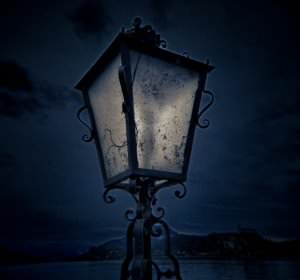 For the female college student of the 1920s, who was discovering what is photography in her school report offered here exclusively by PhotographyTalk, being able to examine and hold a camera of the time seemed to have made her assignment much more interesting.
For the female college student of the 1920s, who was discovering what is photography in her school report offered here exclusively by PhotographyTalk, being able to examine and hold a camera of the time seemed to have made her assignment much more interesting.
The Camera and the Lens
“As would only seem possible, the camera developed along with the photographic chemistry. In the camera, we have nothing more or less than a dark box, to one end whereof a lens is adjusted, while to the other end is filled a ground glass upon which the image is cast and by which it may be brought to a focus. When the object to be taken has been carefully focused, the ground glass is removed and what is called a dark slide or “back” inserted in its place. Exposure to the light is affected by the withdrawal of a shutter and the removing of the cap from the lens through which all the light must pass.
“These are the essential features of a camera; and if the apparatus fulfills the conditions required, it is a perfect camera, tho of the simplest form.
“The various parts of the camera are the body, the lens, the ground glass, focusing plate or screen and the dark slide or back, which is made to fit into the groove in the body when the focusing plate is withdrawn. The shutter is another part.
“Each of these four primary parts of the camera has undergone various changes and modifications of the form here represented with the progress of the art.
“The body of the instrument, which in early days of photography was often made of a cigar box and a spectacle lens, has developed into a somewhat complicated affair. The camera in its first state was not able to focus properly. This was later attained by adopting a telescope action to the tube. The next step was to make the body of the apparatus consist of two boxes, one sliding within the other. This was a distinct advance on the single box as it permitted of more than one lens being used.
“Numerous suggestions have from time to time been made for adding to the camera, especially the developing chamber.
“The lenses may be divided into five classes, four of which are in general use. The four in general use are (1) the Single Lens, (2) the Rapid Rectilinear Lens, (3) the Wide Angle Lens and (4) the Portrait Lens, the fifth is the Tele-Photo Lens, which little is known of.”
The Plate Holder – Focusing Cloth
“The first thing to do, in operating a plate camera, is to place the plate or film in the plate holder. I was told that the plate was very sensitive to the light and that great care shout be taken to keep the light from entering, for it would be useless to continue if the light is allowed.
“The inside of all plate-holders are dusted for every grain of dust that settles on the plates that will leave a little white speck upon the finished negative. Then, as far away from the red light as practicable to see, open the packet of plates. Every pair will be face-to-face with a piece of card at the edges to prevent them from actually touching one another. If there is any doubt as to which is the face, one can remember that the shiny side is the plain glass and that, of course, is the back. Put them in the plate-holder, one in each side. The sensitized side of the plate has to face the lens of the camera, so that the plate must be placed in the plate-holder with the dull side next to the slide.
“The holders are then securely closed and the photographer is ready for work.”
The college student’s report on what is photography seems to verify that she was not a photographer; however, it is clear, according to certain references, that someone had taken the time to show her a camera, lenses and the process of loading the plate holder. The other lesson for today’s digital photographer is to recognize how much work and effort was needed just to prepare the surface on which the image would be captured. The best photographers of the day must have had an amazing level of patience and perseverance. Qualities that today’s photographers should make a part of their shooting philosophy. These qualities lead to better photos and a more enjoyable creative experience.
People who read this PhotographyTalk.com article also liked:
Your feedback is important to thousands of PhotographyTalk.com fans and us. If this article is helpful, then please click the Like and Re-Tweet buttons at the top left of this article.
Photograph by Photography Talk Member Dyan Wijesooria
